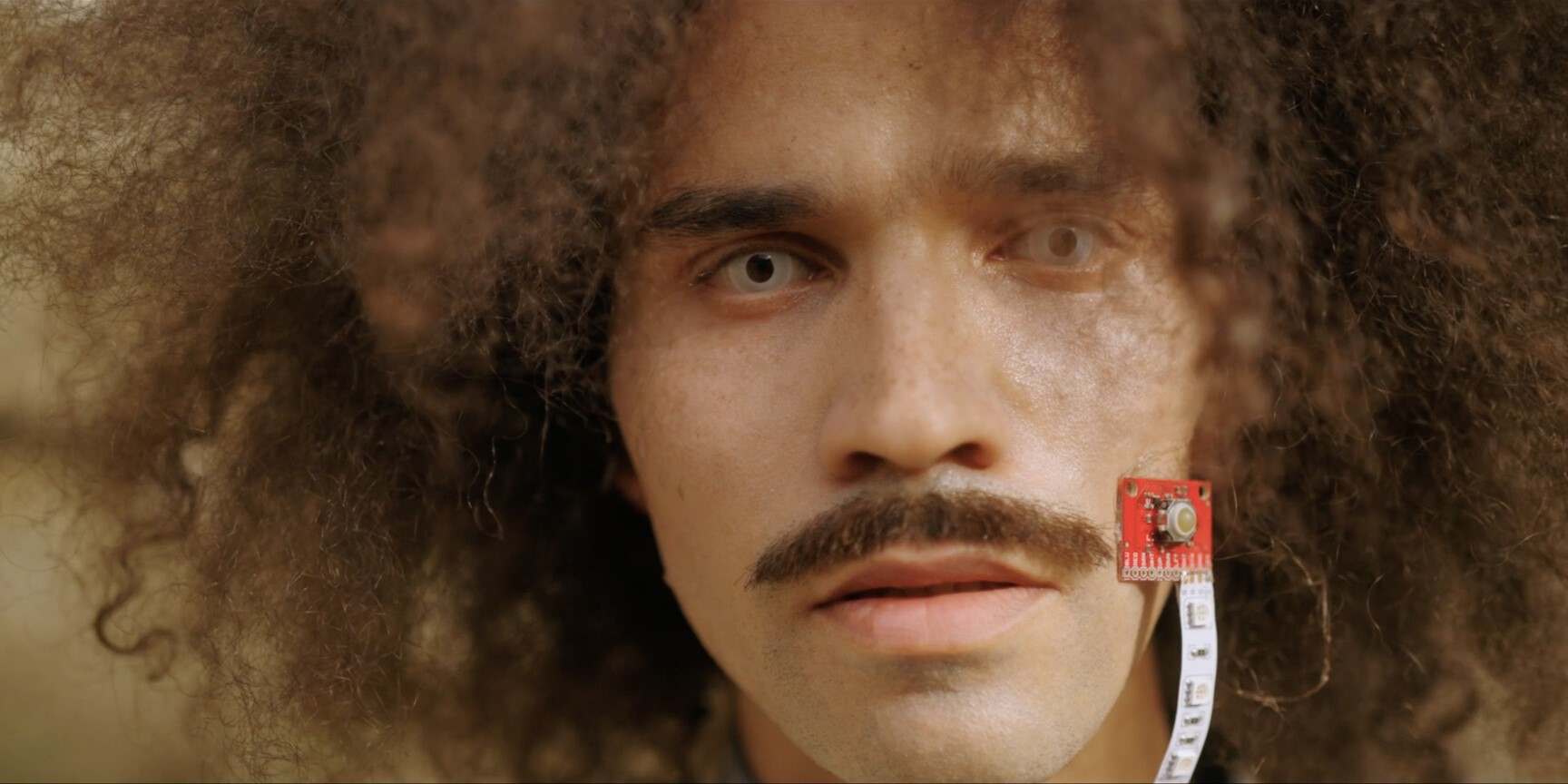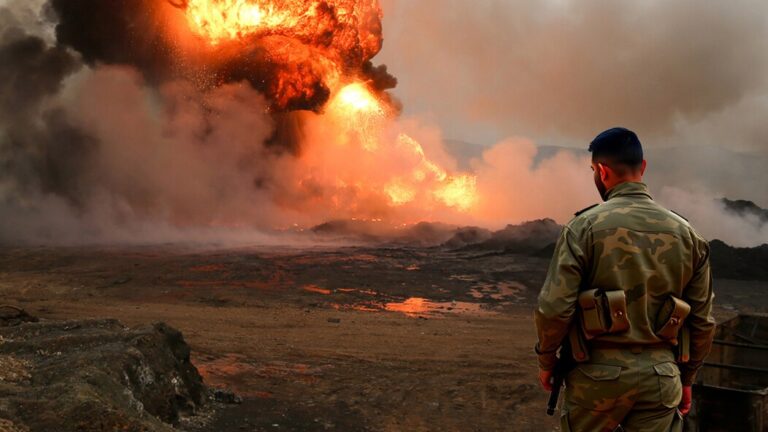Ana Hofmann | 00:24:58 | Switzerland
No Dialogue
“And in the end, lions feed on grass. But sometimes also on flowers.”
Short Synopsis:
Hyper Zone is a film set in a post-apocalyptic wasteland. It explores processes of transformation and reorientation and bespeaks what could be called “the manifold minor apocalypses” of our time of upheaval. Whereas today the planet fears the planetary crisis, the film sets in after the crisis. The old reality lies waste. The four protagonists “create” their new reality. The relationships between humans, mycelia, animals, non-living beings and bots intertwine in a social, abstract and ecstatic experiment.
Long Synopsis:
Text by Jörg Scheller (art historian, journalist and curator)
At the center of Hofmann’s film is a apocalyptic realignment – however, under decidedly secular, contemporary auspices. The color-grading alone suggests that the artist does not proceed from dualistic metaphysical concepts like “heaven and hell” or “good and bad” in the first place, but from the entangled empirical realities of earthly life: As the film progresses, the color grading subtly changes in the form of a continuum. The four protagonists “create” their reality by themselves – performatively, through gestures, rituals, repetitions, variations. Hence, the characters in the “Hyper Zone” can be seen as post-divine Gods who create reality not through sublime speech acts ex nihilo, but from rubble through bodily movements and gestures, through dance and martial arts, through shape-shifting and identity-bending, through experiments, improvisation, emergence. And as the four set about to create, a wealth of possibilities, but also of insecurities arises. With that said, “Hyper Zone” bespeaks what could be called “the manifold minor apocalypses” of our time of upheaval. We live in an era where apocalypticism may not only pertain to the climate crisis or the impending global war, but also to the plethora of ends that comes along with the perpetual reassessments of reality in open societies. Hofmann’s protagonists seem to incorporate this condition. Ends after ends have been diagnosed, proclaimed, desired, and many more continue to be diagnosed, proclaimed, desired: the end of history, the end of men, the end of capitalism, the end of truth, the end of marriage, the end of patriarchy, the end of illusions, the end of nature, the end of democracy… This carnival of ends is accompanied not only by a carnival of returns, but also by a carnival of dissolutions. All around us, boundaries are dissolving, opposites are crumbling. The dualistic order of the sexes is contested. The dualistic order of nature and culture is contested. The dualistic order of modern and pre-modern is contested. On top of this, the modernist order of disciplines and social systems is being deconstructed: fashion is merging with art, science is melting into activism, politics is becoming economy, trans-, inter-, and multi-disciplinarity are in full swing. Hofmann’s strongly stylized film synthesizes and blurs elements of fashion clips, video art, music videos. It is unclear to which genre it belongs – most likely to one that has just dissolved, or maybe to a hyper genre? Just like the protagonists are dancing and practicing forms between ends and beginnings, the film is in an in-between state; a state of post-oppositionality, post-antagonism, of indisciplinarity, as it were.
Cast
Martina Momo Kunz
Benjamin Spinnler
Tim Bettermann
Aline Petro
Benjamin Burger
Songhay Toldon
Fabienne Watzke
Rebeka Mondovics
Writer
Ana Hofmann
Producer
Ana Hofmann
Editing
Ana Hofmann
Felix Hergert
Music and sound design
Pascal Lund-Jensen
Color-grading
Jürgen Kupka
Costumes
Henriette Frederike Herm
Camera
Simon Bitterli
Michael Schwendinger
Make-up
Silvana Büsch
Nina Zogg
Dramaturgical advice and coaching performers
Dimitri Stapfer
Choreography group 2
Rebeka Mondovics




